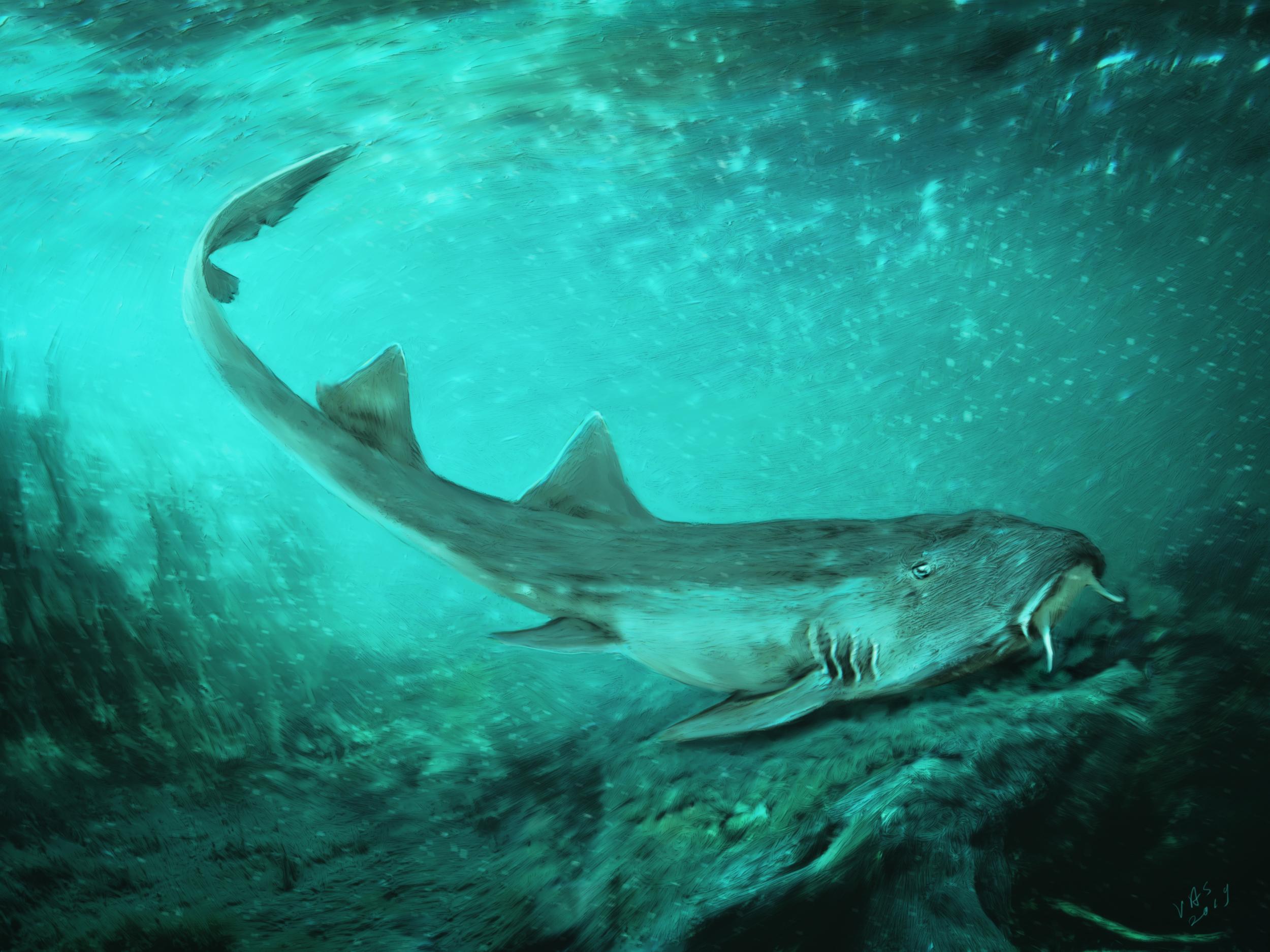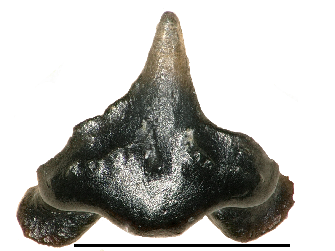Prehistoric shark with 'spaceship-shaped' teeth discovered in ancient riverbed
'The more we discover about the Cretaceous period just before the non-bird dinosaurs went extinct, the more fantastic that world becomes'

Your support helps us to tell the story
From reproductive rights to climate change to Big Tech, The Independent is on the ground when the story is developing. Whether it's investigating the financials of Elon Musk's pro-Trump PAC or producing our latest documentary, 'The A Word', which shines a light on the American women fighting for reproductive rights, we know how important it is to parse out the facts from the messaging.
At such a critical moment in US history, we need reporters on the ground. Your donation allows us to keep sending journalists to speak to both sides of the story.
The Independent is trusted by Americans across the entire political spectrum. And unlike many other quality news outlets, we choose not to lock Americans out of our reporting and analysis with paywalls. We believe quality journalism should be available to everyone, paid for by those who can afford it.
Your support makes all the difference.The remains of a freshwater shark that swam the rivers of South Dakota 67 million years ago have been unearthed by scientists.
Tiny teeth sifted from over two tonnes of prehistoric earth revealed a bottom-dwelling creature similar to some modern-day carpet sharks that ambush their prey from the ocean floor.
It was these teeth – which reminded the team of the spaceships from the 1980s video game Galaga – that gave the creature its name, Galagadon nordquistae.
The shark was discovered in the ancient sediment found alongside Sue the Tyrannosaurus rex, a famous specimen held at the Field Museum of Natural History in Chicago.
However, there was no suggestion the shark had any interaction with the enormous predatory dinosaur beyond living in the river from which it may have drunk.
“Galagadon was not swooping in to prey on T. rex, Triceratops, or any other dinosaurs that happened into its streams,” said Dr Terry Gates, a palaeontologist at North Carolina State University who led the study.
“This shark had teeth that were good for catching small fish or crushing snails.”
The teeth, which were no bigger than pinheads, were all that remained of the ancient fish, as shark skeletons are made of cartilage which does not fossilise well.

Karen Nordquist, a Field Museum volunteer who helped discover the fossils and in whose honour the species was named, said the teeth were incredibly difficult to spot.
“To the naked eye, it just looks like a little bump, you have to have a microscope to get a good view of it,” she said.
The resemblance of these teeth to those found in carpet sharks such as the wobbegong of Australia gave the scientists an idea of what it would have looked like.
They suggested it had a flat face and mottled colouration that would have allowed it to lie hidden at the bottom of the river.
Besides revealing a new species of shark, the scientists say their discovery also provide new evidence of the Cretaceous habitat in which Sue the T. rex lived – alongside rivers that were not far from newly formed oceans.
“The more we discover about the Cretaceous period just before the non-bird dinosaurs went extinct, the more fantastic that world becomes,” said Dr Gates.
The discovery was outlined in the Journal of Paleontology.
Join our commenting forum
Join thought-provoking conversations, follow other Independent readers and see their replies
Comments